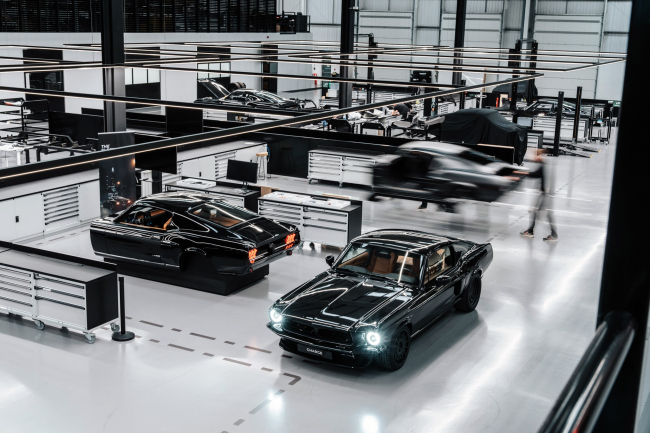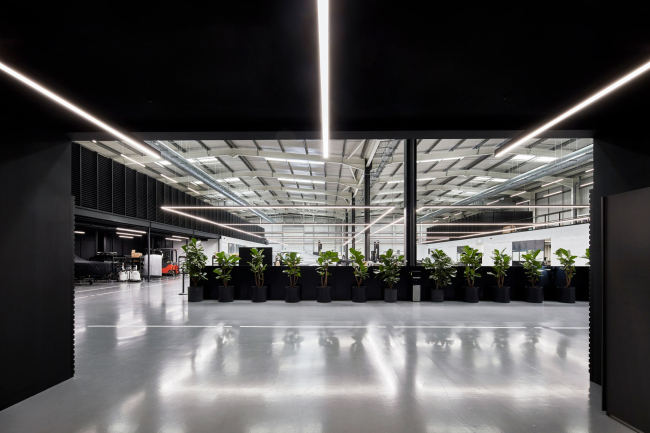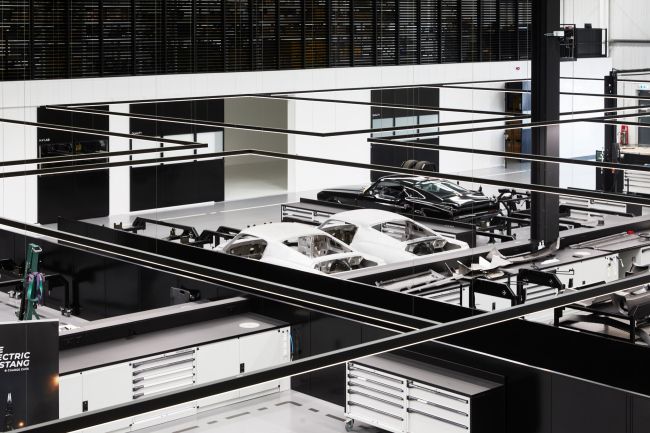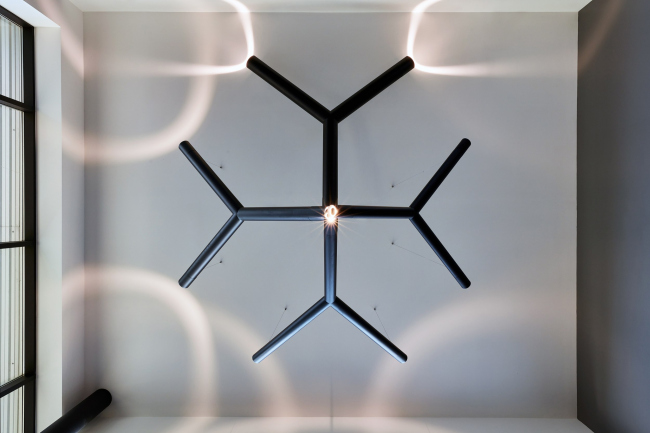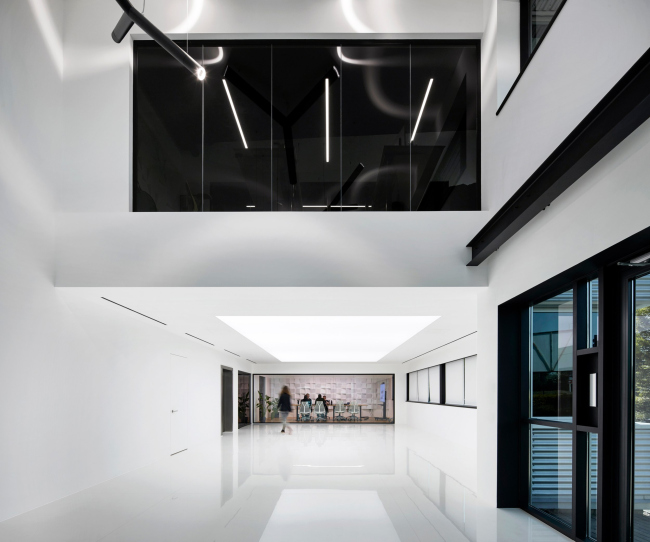|
Published on Archi.ru (https://archi.ru) |
|
| 29.12.2023 | |
|
Brilliant Production |
|
|
Julia Tarabarina |
|
| Studio: | |
|
The architects from London-based MOST Architecture have designed the space for the high-tech production of Charge Cars, a high-performance production facility for high-speed electric cars that are assembled in the shell of legendary Ford Mustangs. The founders of both the company and the car assembly startup are Russians who were educated in their home country. Olga McMurdo studied at Moscow Institute of Architecture under Andrey Nekrasov and Vladimir Plotkin, received a gold medal for her diploma, then she worked at Reserve Union, SPEECH, Zaha Hadid Architects, OMA, and Nicholas Grimshaw. Then she founded her own practice in London. In general, it is not surprising that an architect with such a background can design a space for the assembly of super-modern electric cars… but retro! But fast: they accelerate to 60mph in 3.9sec, which is about 100 km/h. The creative director of Charge Cars, Mark Roberts, comes from Formula 1. At the same time, the prime mover and CEO of the project is , a graduate of St. Petersburg State University.  Charge CarsCopyright: Photograph © Paul Riddle / provided by MOST Architecture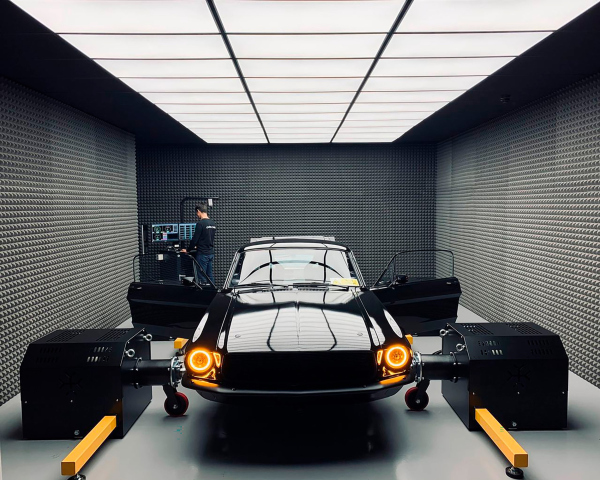 Charge CarsCopyright: Photograph © Paul Riddle / provided by MOST ArchitectureMeanwhile, the manufacturing startup is not designed for the signature “Ford”, ahem, assembly line system – it rejects it “in favor of integrating research, development, production, recreation, and employee socializing”. This is a kind of new Ford of a perfect world, practically a dream, well, for those who have the money for it. The factory is located in the west of Greater London, near Heathrow Airport among logistics hangars, and externally it’s one of a row of elegantly striped corrugated metal boxes, surrounded by sheared baskets and lime trees [one is tempted to say “I’m going to take my facemask off and breathe on you here”], quite practical and simple in shape. The main goal, and perhaps the main challenge, was the architectural understanding of the technically complex intricacies of production, discreet and unobtrusive, but immersed in the subtleties of the two professions of car mechanic and architect: “This clean factory space, where the white and the black amplify each other by contrast, representing the fusion of a laboratory and a garage, reflects the elegance of modern engineering solutions and references the iconic tracks of Formula 1”. Charge CarsCopyright: Photograph © Paul Riddle / provided by MOST ArchitectureCharge CarsCopyright: Photograph © Paul Riddle / provided by MOST ArchitectureCharge CarsCopyright: Photograph © Paul Riddle / provided by MOST ArchitectureThe facility is basically a hangar, austere, black-and-white, but very fresh even in pictures. It has greenery and floor-to-ceiling glass. The architects paid a lot of attention to the optimal layout and light distribution. For example, in the office part, the light is built into the duct system and can be programmed, while in the assembly area thin strips of lights are lined up along the boundaries of the assembly areas, that is, they do not strike the eye, but provide uniform illumination of the car parts. Charge CarsCopyright: Photograph © Paul Riddle / provided by MOST ArchitectureThe climax of this solution, which is focused on technology and follows the requirements of sophisticated modern production, is the lobby light fixture. The architects went all the way: it is anamorphic, its shape is derived from Feynman diagrams, and at the same time it coalesces into the Charge Cars logo when viewed strictly from the bottom up. Charge CarsCopyright: Photograph © Paul Riddle / provided by MOST ArchitectureThe concept of “anamorphic” is applied mainly in photography and moviemaking and means optical change of the image in different scales of parts and in two perpendicular planes. And Feyman diagrams are a way of graphical representation of particle interaction in quantum field theory. What a mouthful that was... Such a thing is definitely in line with the specifics of modern production and is worthy of hanging above its entrance. Charge CarsCopyright: Photograph © Paul Riddle / provided by MOST ArchitectureIn fact, the light fixture can be described as a three-dimensional snowflake decomposed into Y-shaped elements, divided and placed in space so that, when viewed from different vantage points, they float in space like some kind of UFOs, and when viewed from a certain point they coalesce into the Charge Cars logo – in the form of a Maltese cross, which is also quite witty. This is an approach that is characteristic of modern art objects and rational from a marketing point of view at the same time. 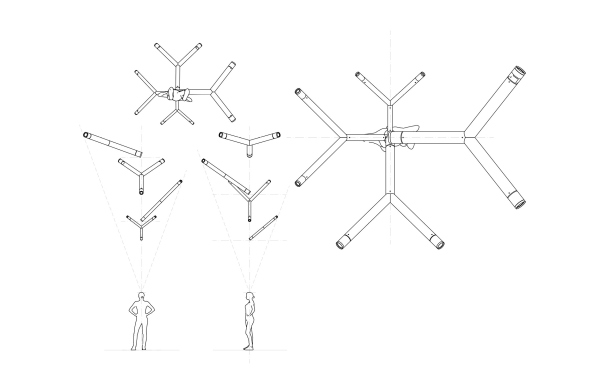 Charge CarsCopyright: © MOST Architecture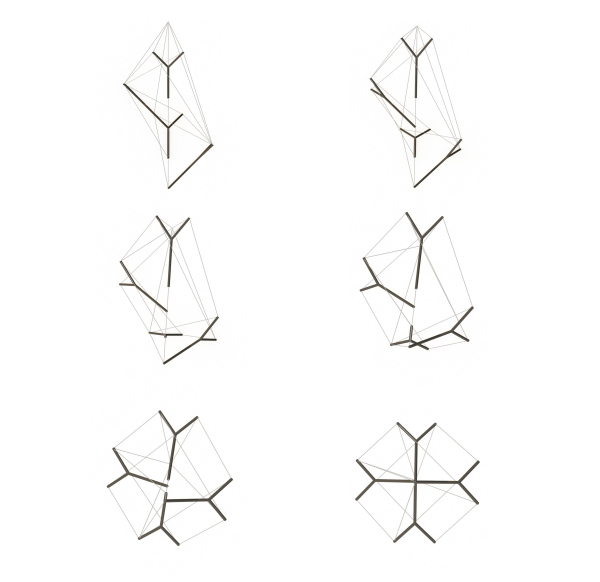 Charge CarsCopyright: © MOST ArchitectureCharge CarsCopyright: Photograph © Paul Riddle / provided by MOST ArchitectureAll this is placed in a very small, but still double-height, space of the entrance lobby – a science-like cherry on top of the technology cake. Let’s not be surprised that “our” people do things like this overseas. Let’s just be happy for them. The architects’ description of the project is available here. A little movie about the Charge Cars factory space: Charge CarsCopyright: © MOST Architecture Charge CarsCopyright: © MOST Architecture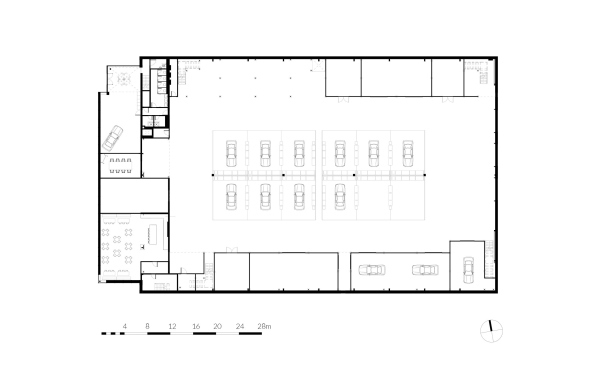 Charge CarsCopyright: © MOST Architecture Charge CarsCopyright: © MOST Architecture |
|
